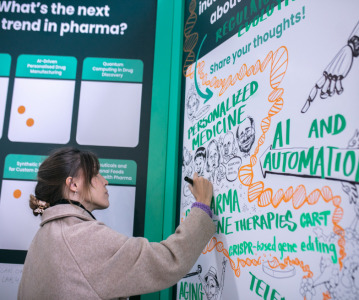Despite 330 pipeline products, stem cell therapies face commercial challenges

The stem cells field is still surrounded by a wide variety of obstacles, most notably the high cost of research, according to key opinion leaders.
While steady progress in clinical research and increasing evidence of product effectiveness are significant driving factors for growth in the stem cell therapies market, a number of obstacles remain before they become widely commercially viable, according to business intelligence provider GBI Research.
The company’s latest report — Stem Cell Therapies – Global Trends in the Competitive, Technological and R&D Landscape — states that the stem cell therapy pipeline as a whole is relatively large, with 330 products in active development across all stages. Indeed, R&D within the sector is gaining momentum as candidates move into clinical development, and the results of clinical studies become apparent, clarifying the therapeutic potential of stem cell therapy.
Rodrigo Gutierrez Gamboa, Managing Analyst for GBI Research, states: “The stem cell space provides therapeutic potential in indications where current pharmacological and surgical treatment options are ineffective. However, there remains a significant divide between the number of stem cell therapeutic applications currently available for patients and the number of research programs investigating the wider medical applications of stem-cell-based therapies.
“Stem cells are currently being used for a modest variety of indications, with skin and blood stem cells representing the majority of therapeutic uses. The stem cell industry is pursuing a broad base of therapeutic applications, and this is evident in the R&D efforts observed in the sector, as over 15 therapy areas are being targeted by the stem cell industry in over 1,000 clinical trials.”
Despite promising recent developments within the field of stem cell technology, converting its scientific potential into real therapeutic value still represents a significant challenge.
According to GBI Research’s survey of key opinion leaders, the stem cells field is still surrounded by a wide variety of obstacles, most notably the high cost of research, which survey participants stated was the biggest factor limiting stem cell progress.
Gutierrez Gamboa concludes: “Manufacturers will need to adopt novel strategies to realize their full potential. It is likely that manufacturing methodologies will use partially or fully automated systems in future approaches, in order to improve yield, purity and cost-effectiveness.
“There have been good strides made by stem cell manufacturing companies, such as those made by Cynata Therapeutics, which is implementing innovative manufacturing methods to generate robust, consistent and inexpensive stem cells. Such companies are pointing towards a promising outlook in this regard.”
Related News
-
News Lessons from CPHI Milan 2024: Sunny Intervals for Pharma Manufacturing?
As the 2024 CPHI conference wrapped up in Milan, we caught up with L.E.K. Consulting – a global strategy consulting firm with deep expertise in pharma manufacturing – to discuss evolving market perspectives and business outlook. -
News US BIOSECURE Act passed by US House of Representatives
The controversial act, which has already impacted several foreign companies operating in the US, was passed by the House of Representatives on September 9, 2024. It is now headed for the US Senate before it can be signed into law by President Joe Biden... -
News Pharma Supply Chain People Moves
The latest appointments, promotions, and structural changes across the pharmaceutical supply chain. -
News Drug prices agreed upon as part of the US Inflation Reduction Act
The Inflation Reduction Act brought into constitution by the Biden administation in 2022, which proposed a drug price negotiation between the government and pharmaceutical companies, has reached it's first agreement. -
News BIOSECURE Act continues to loom over Chinese pharma manufacturers
With the US BIOSECURE Act on its way to passing into legislation, Chinese companies are facing declining revenues within the first half of 2024 as US pharmaceutical and healthcare companies pull their businesses from the country. -
News Ophthalmologic drug product Eylea faces biosimilar threats after FDA approvals
Regeneron Pharmaceutical’s blockbuster ophthalmology drug Eylea is facing biosimilar competition as the US FDA approves Biocon’s Yesafili and Samsung Bioepis/Biogen’s Opuviz. -
News ONO Pharmaceutical expands oncology portfolio with acquisition of Deciphera
ONO Pharmaceutical, out of Japan, is in the process of acquiring cancer-therapy maker Deciphera Pharmaceuticals for US$2.4 billion. -
News First offers for pharma from Medicare drug price negotiations
Ten high-cost drugs from various pharma manufacturers are in pricing negotiations in a first-ever for the US Medicare program. President Biden’s administration stated they have responded to the first round of offers.
Position your company at the heart of the global Pharma industry with a CPHI Online membership
-
Your products and solutions visible to thousands of visitors within the largest Pharma marketplace
-
Generate high-quality, engaged leads for your business, all year round
-
Promote your business as the industry’s thought-leader by hosting your reports, brochures and videos within your profile
-
Your company’s profile boosted at all participating CPHI events
-
An easy-to-use platform with a detailed dashboard showing your leads and performance




.png)
.png)

.png)